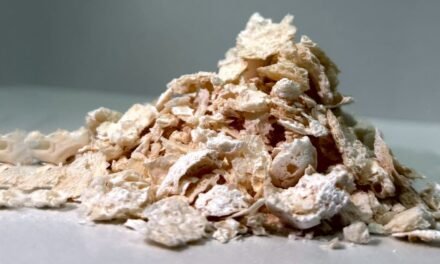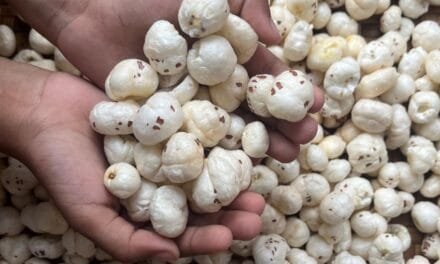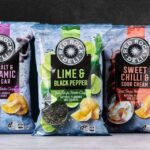For several decades, food marketers, food processors, food technologists, and nutritionists have worked tirelessly to put various types of processed foods onto the market. These variants with differential claims have helped small food businesses to thrive. Rajat K Baisya explores some recent trends in food processing industry in India.
It is generally believed that food habits hardly change. Food marketers, food processors, food technologists, and nutritionists have been working relentlessly to introduce various types of processed foods in the market for the last several decades, claiming many health and wellness benefits. A lot of experiments are being done to create new concepts to introduce new formulations claimed to be different with superior benefits, which are being offered to create new market over the years for these product variants and even new kinds of foods.
There was a effort from food marketers to influence consumers to attract these newfound formulations for the people targeting the health-conscious, young generation with disposable income, particularly focusing on the upper end of the socio-economic class consumers. These deliberate efforts are the driving force behind some of the recent trends in food processing industry in India.
Consumers, particularly young generations, are increasingly becoming health conscious, and taking that as a cue, processors, in consultation with nutritionists and technologists, have introduced a range of new products and categories in the market. They all are thriving and growing, but none have become a very big as yet. If we still have to name a giant that has emerged in the last three decades or so, we have to name ITC Agro. There are many players in the market, trying to get a foothold, experimenting with various ideas and concepts to carve out aworkable business model for them. I can only discuss a few such categories, keeping the remaining for the forthcoming issues to be taken up.
By size, we know that India’s processed food sector is still very large, although in terms of processing and consumption, it is among the lowest in the world. Our industry still looks at high-end consumers represented by SEC A and, to some extent, SEC B for processed food. The industry will see an explosion of growth if products are developed for the inclusion of SEC C and D, as well. Late C.K Pralhad used to tell businesses to grow by introducing products for bottom-of-the-pyramid consumers. He used to say in those days –‘introduce an ice cream at Re 1 and see what will be the market for you in India’.
C.K. Pralhad, a Professor at Michigan University in the US, also served as an independent director of HUL for some time. He used to believe that it would be possible to produce ice cream at such an apparently ridiculously low price. Ice cream cups used to be sold at Rs 12-15 a cup in those days, but we also had Rs 5 a cup as an option for ice cream for poor people.
In a developed economy, everyone can afford processed food products. One reason for that is, over 80% of the fresh produce is sold as processed. Moreover, fresh is always costlier than processed because of high energy cost, high logistics cost, including storage, high wastage and rejection, overheads, and the degree of freshness always changing with time forcing retailers to sell by lowering the price adjusted with time. Processed food for them is cheaper than fresh. In developed economies, therefore, processing is the preferred option. In India, we process only 4% of our total fresh produce of fruits and vegetables, in spite of the fact that we are the world’s largest producer of many items. We have not achieved the scale of production to bring down the price to be competitive and affordable for all domestic consumers.

Let us now explore some recent trends in food processing industry in India and mention a few product categories where new variants have been introduced over the last two decades:
Bread and Cookies
Earlier, we had loaf bread, and then we had white bread, milk bread, then we had sliced bread, and buns, thereafter, we had whole wheat bread, rye bread, then we have multi-grain bread. Then there are variations again, calling them high-fiber bread, millet bread. Bread is a low-margin product category. Many players could not sustain this business. HUL acquired Modern Foods, a Govt of India undertaking, but could not sustain this business and ultimately divested it.
Nevertheless, cookies are high-margin categories. There were sustained efforts from many leading players to create success stories in cookies. The bulk of the biscuit category is constituted by low-margin Glucose and Marie biscuits; a small part is specialty biscuits like cream and salted biscuits.
Cookies contribute only 15% of the total category, growing at the rate of 9%. There are many types of cookies introduced in the market like chocolate chips cookies, butter cookies, peanut butter cookies, sugar cookies, shortbread, and macaron. Then we have multi-grain cookies, and of late, in everything, manufacturers are introducing a variety with millet, and as such, we also have multi-grain millet cookies. Scottish shortbread is quite popular. This has a very high butter content and thus tastes very good, which consumer likes.
Healthy and Natural Foods
In every category of processed food, we have so many variants. But let us talk about a clean, green, healthy, and premium category of foods. Vegetarianism is now more fashionable. For everything, we get vegetarian alternatives, including veg ice cream. Furthermore, that includes milk as well. Cow milk is low fat, with about 4% fat, whereas buffalo milk has 6-8% fat. So, we consider cow milk is better and healthier than buffalo milk, which is the largest source of milk in India. Abroad, they do not know what is buffalo milk. It is only cow milk for them. In India, many products were introduced claiming the goodness of cow milk, like cow ghee, cow butter, and cheese, in addition to organic milk.
Earlier we had soymilk, which struggled for years to find a market. But it did not stop there, we now also have almond and oats milk. I have seen now that many people have withdrawn from dairy milk altogether. Many take other forms of milk, like soya milk and almond milk. I can foresee that fluid milk consumption will gradually decline, and the dairy sector will have to depend on milk products like cheese, butter, yoghurt, ice cream, and so on. Milk and sugar are now being seen as not good for health, and health-conscious consumers now avoid them. I plan to write on this in the forthcoming issue of PFI.
We can see fresh juice without preservatives, then cold pressed juice in fruit juices. Some marketers differentiated everything by calling the product premium quality, 100% pure claims are common place as if impure foods are also there in the market.
In the health food segment, we have organic, natural, 100% Bio, Eco-friendly, Healthy foods, Raw Foods, and Vegan, which include vegan meat products, including burgers, patties, and meatballs. ITC has taken the lead in this category, but there are many small players trying to create their own niches in vegan foods. Both soya protein as well as yeast-based protein, and yeast extracts are widely used in vegan foods. This category has added and also extended the frozen food category, which was earlier limited to frozen potato products of all types, largely represented by McCain Foods in India. The list of variants seems to be endless.
Semi-finished foods
There is also a rising trend of semi-finished foods. In this category, south Indian dishes, snacks, and cuisines doing better, targeting the young and working couples by introducing quick breakfast for them to have at home before rushing for their offices. South Indian breakfasts like Idli, Vada Sambhar, or Dosas of various types are believed to be healthier and easier to make, and taking that opportunity, processors have introduced semi-finished products to make it more convenient for this segment, which worked well in this category.
These variants with differential claims have helped small food businesses also to thrive and continue to add new variants into the categories that they represent. Although this is a good development, but we are yet to witness a higher trajectory of growth as expected. The environment, sustainability, and governance (ESG) are the new guiding criteria for businesses, including food processing. We will now see food products in the market with sustainability claims.
Author is the chairman of Strategic Consulting Group and served as Professor and Head of the Department of Management Studies, IIT Delhi. Prof Baisya is also the president of Project & Technology Management Foundation.

















